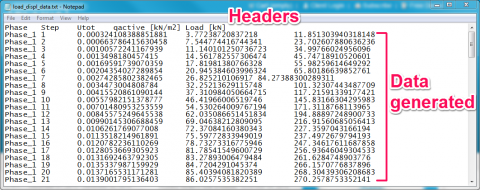
Hansen JB (1961) A general formula for bearing capacity. Griffiths DV (1989) Computation of collapse loads in geomechanics by finite elements. Griffiths DV (1982) Computation of bearing capacity factors using finite elements. Q Appl Math 9(4):381–389įrydman S, Burd HJ (1997) Numerical studies of the bearing capacity factor N γ. J Appl Mech ASME 18:371–378ĭrucker DC, Prager W, Greenberg HJ (1952) Extended limit design theorems for continuous media. Elsevier, Amsterdamĭrucker DC, Greenberg HJ, Prager W (1951) The safety factor of an elastic–plastic body in plane strain. Appl Math Model 22(4–5):331–349Ĭhen WF (1975) Limit analysis and soil plasticity. Int J Geotech Eng 10(3):311–315Ĭhandrashekhara K, Antony SJ, Mondal D (1998) Semi-analytical finite element analysis of a strip footing on an elastic reinforced soil.

Balkema, Rotterdam, BrookfieldĬhakraborty D (2016) Bearing capacity of strip footings by incorporating a non-associated flow rule in lower bound limit analysis. Can Geotech J 30(6):1024–1033īrinkgreve RBJ, Vermeer PA, Bakker KJ (1988) Material model manual, PLAXIS V.7, A.A. Based on the study, a few suggestions are given in regard to the FE analysis of geotechnical stability problems to obtain the quick results.īolton MD, Lau CK (1993) Vertical bearing capacity factors for circular and strip footings on Mohr–Coulomb soil. The FE results are compared with the analytical solutions of Terzaghi and Meyerhof. The ultimate capacity is independent of the deformation parameters and will remain almost same corresponding to the material models like MC, HS, HSsmall, and SS. It is found from the results of FE analysis that the ultimate load of the strip footing is dependent on the strength parameters, width of footing, unit weight of soil, and surcharge at the base level of the footing. The material models considered are Mohr–Coulomb (MC) model, Hardening Soil (HS) model, Hardening Soil model with small-strain stiffness (HSsmall), and Soft Soil (SS) mode-l. The study also examines the effect of different material models on the ultimate capacity of the strip footing. Sensitivity analysis is carried out to examine the ultimate capacity of strip footing considering the strength parameters ( c′, ϕ′, and ψ), width of strip footing ( B), unit weight of soil ( γ), surcharge ( q) at the base level of footing, and the deformation parameters ( E and ν) as the variables. The soil is assumed as linear elastic perfectly plastic with Mohr–Coulomb failure criterion and non-associative flow rule. This paper presents the results of finite element (FE) analysis of the ultimate failure load of a rough base rigid strip footing resting on c- ϕ soil.


It is necessary to quantify the parameters affecting the ultimate capacity of footing. Finite element method can be used for computing bearing capacity of shallow foundation with irregular geometry resting on variable subsoil.


 0 kommentar(er)
0 kommentar(er)
